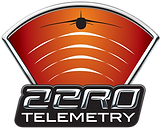By: Thomas Wm. McGarry

MODELS SHARE THE AVIATOR’S CINEMA SUCCESS
Large, state-of-the-art flying model aircraft played a vital role in the box office and creative success of The Aviator, the recent film biography (now available on DVD and Video) portraying a brief period in the remarkable life of Howard Hughes.
The success of the models in portraying two aircraft that no longer exist and one that only had a single brief flight was due to the artistic and technical skills of Aero Telemetry, a Huntington Beach, California company producing electronic, communications and other components for military unmanned aerial vehicles (UAVs) and for military and commercial satellites.
Aero Telemetry and a new spin-off Aero F/X was founded and is still headed by Joe Bock (also spelled Bok), a pilot and an aerospace engineer trained at the University of Southern California.
Among the 11 models built for the film were the HK-1 Hercules Flying Boat, the XF-11 reconnaissance aircraft and the H-1 Hughes Racer. The models of the three aircraft were among the largest and fastest radio-controlled scale model aircraft constructed and successfully flown. The H-1B Hughes Racer, built of composite material and weighing 450 lbs had an 18-foot wingspan and flew at 130 mph while the 550 lbs. XF-11 model flew at 120 mph and had a 30 foot wingspan.
The HK-1 Hercules, powered by eight electric motors, weighed in at 375 lbs., had a 26 foot wingspan and flew at 90 mph over Long Beach harbor, the same location of the first and only flight of the actual aircraft. The model Hercules accumulated 15 minutes of flight time on each of the six flights during filming.
The company also built static models for the movie. Each model aircraft had a unique role in the movie including one that was not planned. Aero Telemetry provided models of a German Gotha IV bomber with a 13-foot wingspan, a 1/12th scale model of the Sikorsky S-38 flying boat, Hughes’s flying yacht, a DeHavilland DH-4And several 1/5th scale models of SE-5s and Fokker D-7s for Hells Angel’s scenes.
The need for a flying model of the H-1B came after the original contract for the other two aircraft had been signed so to meeting the film’s production schedule, the Aero Telemetry staff set aside work on the XF-11 and HK-1 to concentrate on designing and building the Racer.
The H-1B Hughes Racer was filmed on its initial flight because filming schedule didn’t allow time for a re-build if it crashed during testing. The producers had originally planned to use the full-scale one-of-a kind reproduction of the H-1B built in Oregon by Jim Wright but had to resort to models after the aircraft’s fatal crash.
The XF-11 was flown in formation with a helicopter for realistic air-to-air photography and the HK-1 Flying Boat required its own barge for tending and changing the engines’ battery packs.
During filming the models flew over populated areas and at times were 10 miles distant from their human pilots who operated the aircraft from “virtual cockpits” on the ground.
To control the models, Bok chose military-grade transmitters and receivers as well as custom-designed radio-frequency systems operating at military frequencies to avoid Electromagnetic interference. All of the aircraft controls and control systems were designed by Aero Telemetry’s engineering and design staff, as was the custom-built landing gear for the H-1B and XF-11 which benefited from a company engineer who had experience designing landing gear for the Boeing 747 and Douglas DC-9s.
Bok had such faith in his team’s ability and their underlying knowledge and experience that he did not agree to build duplicate models, a standard movie-making requirement “Because when you crash the first one, we want the second one on the runway with the props turning,” according to one movie model mogul.
Bok believed and would build and prove his views by designing the radio-controlled models to classical aerodynamic theory and endowing them with sufficient size and weight. Smaller models are more likely to be buffeted by gusts of wind and inherently have greater instability and are less responsive to control inputs.
Bok said he told The Aviator’s producers that, “We’ve got to build it large enough so that it looks and flies like a real airplane.”
Bok also said he knew most of the people who have flown model airplanes for movies and that not only did a lot of them crash, but that “They’ve all looked like toys.”
The use of large, telemetry controlled aircraft models was against the movie making trend to use computer-generated graphics.“We never lost control of any of the planes for even a split second and we did not crash a single model,” Bok added.
“In terms the movie, our work on The Aviator was groundbreaking. By delivering safe, reliable and convincing scale model airplanes on schedule and within budget, I know we provided The Aviator with the best possible and most cost-effective solution to providing special effects that are really believable and credible with the audience,” he said.
“The proof,” he added, “Is in the move and the rave reviews for the flight sequences.”


